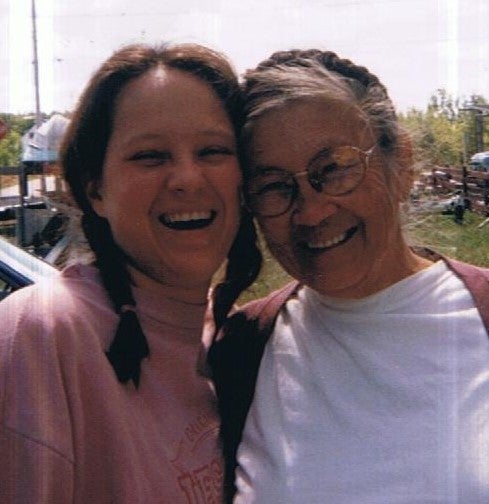[ad_1]
It took Canada 36 years to acknowledge that I am a Status Indian.
I grew up in Matachewan, Ont., a township near Matachewan First Nation. There were only seven houses on the First Nation, so most band members lived in town with French and English neighbours. There, nobody questioned that I was Indigenous. I didn’t question it, because I knew who I was. Yet, according to the Indian Act, my siblings and I were anything but.

In December 1952, my grandmother, Laura Flood, became one of more than 11,000 Indians who were “voluntarily” enfranchised through the racist legal framework of the time. These individuals received Canadian citizenship, but had to renounce Indian status for themselves and all future descendents. When Bill C-31 and changes to the Indian Act abolished oppressive assimilation practices in 1985, my grandmother applied for her Indian status to be reinstated. She received status in 1986, followed by my auntie, uncles and their children.
Unlike her siblings my mother was born legally “not an Indian,” after my grandmother had been enfranchised. When she regained status it was under section 6(2) of the Indian Act, a category that does not let status pass to the next generation — my siblings and I. We spent our formative years without the rights and privileges we should have been afforded. In 1992, when I was in my 20s, I appealed the registrar’s decision in a bid to gain Indian status. Ultimately, I was turned down.
My grandmother had always been adamant she was born Indian, and she would die an Indian — it was simply who she was, just as much a part of her as her brown skin and eyes. A piece of paper from the government could never change that. Together, we entered a lengthy legal battle that would stretch two decades. Unfortunately, my grandmother passed away in the middle of our bid to appeal my Indian status, leaving me to tell her story and continue our fight for justice.
In 2015, our case was denied leave at the Supreme Court of Canada. But that was not the end of our story.
A breakthrough
On Aug. 4, 2020, I was enjoying the day with my family in the log cabin my grandmother had built on our reserve. I had since become a law student, driven to learn how I could change the legislation that led the Supreme Court to deny my appeal.
I decided to check my email. A lawyer had received a decision on a case he had before the Quebec Superior Court regarding the “voluntary” enfranchisement of Margaret Hele. In that case, Hele’s enfranchisement was determined to be invalid because the Indian Act had not included single Indian women over the age of 21 when it drafted the voluntary enfranchisement legislation — only Indian men, their wives and minor children. It was suggested that my grandmother’s enfranchisement could be deemed invalid by the same ruling. My mother, auntie and I danced and cheered at the possibility.
“I am saddened by how much power colonial judicial and parliamentary systems still have to determine who I am.”
My mother and I immediately drafted our request to Indigenous and Northern Affairs to have our file reviewed in light of the Hele case. On Jan. 20, 2021, we received confirmation that my mother’s registration category was changed, allowing me, my siblings and our children to apply for Indian status.
If this had been a Supreme Court decision, news of the Hele case would have made headlines across national media, and likely would have reached those who need to know about it most. Instead, I have been sharing the case and its impacts mainly through social media and email, in hopes that the news reaches families like mine.
In many cases, “voluntary” enfranchisement of women that took place between 1951 and 1985 has been effectively voided via these and other changes. But there is still work to be done. The government needs to fix further issues caused by racist “voluntary” enfranchisement legislation, so that all — Indian men, their wives and minor children — can rightfully be acknowledged as the First Nations people they are.
Bill C-31 and subsequently Bill C-3 changed the Indian Act, but it only helped the grandchildren of women who were enfranchised by marriage. Bill S-3 (2017) has yet to result in changes to the Indian Act that would affect families who “voluntarily” enfranchised. The government is aware of these and other inequities within the Indian Act’s membership section. Bill S-3 ordered a report, and it was completed June 2019, but no further legislative steps have been taken.
As I look forward to gaining status and a voice as a registered First Nation member, I am saddened by how much power colonial judicial and parliamentary systems still have to determine who I am, and what treaty rights I can and cannot access. I am angry that it took this long for Canada to tell me what I already knew: that I am an Anishinaabe woman and a descendant of the Indigenous Matachewan First Nation people.
I have spent my entire adult life fighting the repercussions of the racist enfranchisement legislation. It has been a long and emotional road, one that should never have been necessary in the first place.
Have a personal story you’d like to share on HuffPost Canada? You can find more information here on how to pitch and contact us.
[ad_2]
Source link